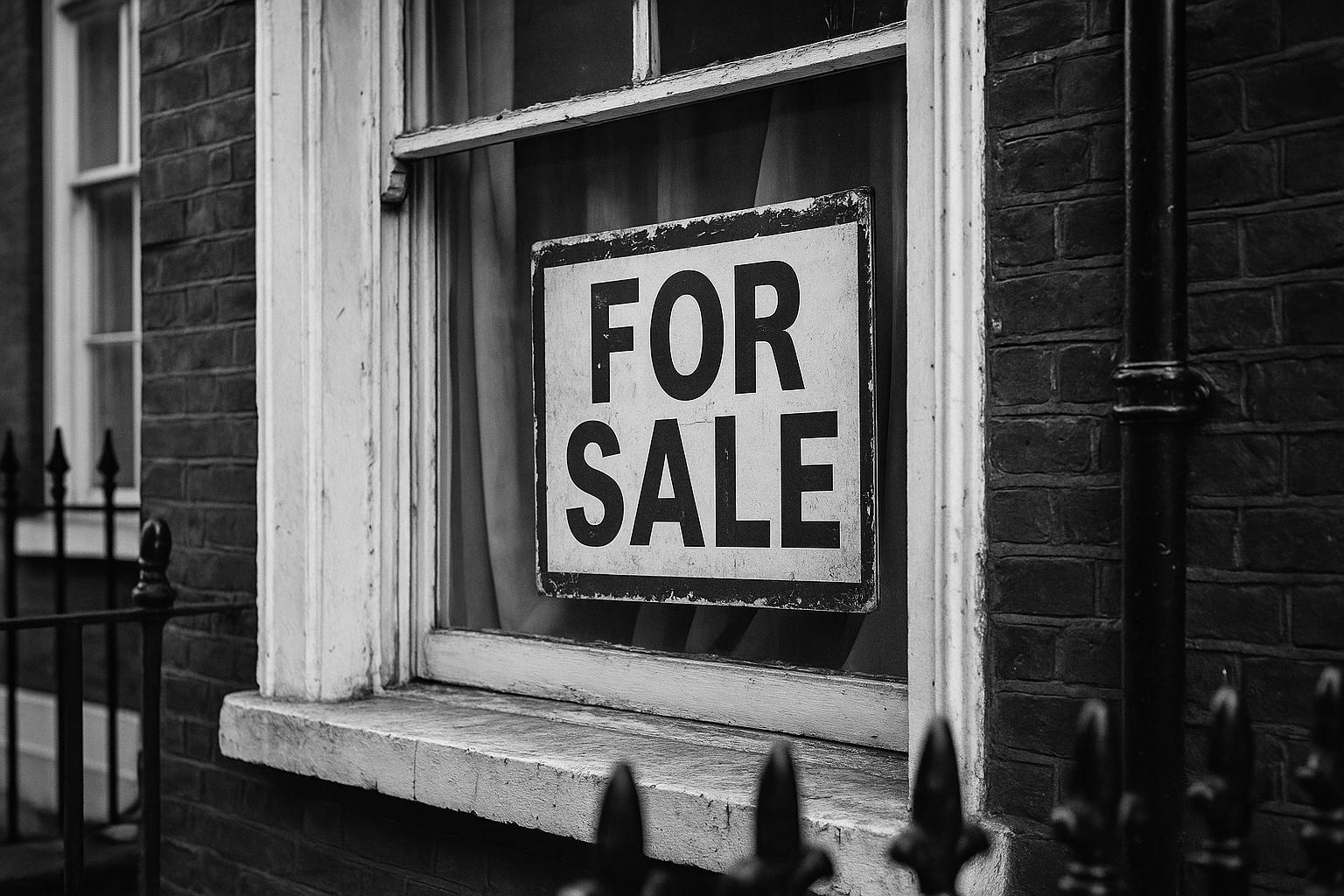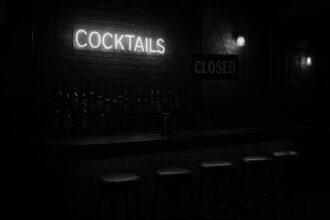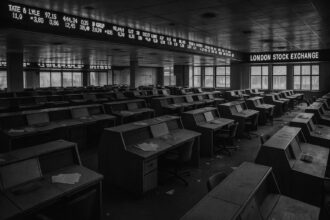A surge in mortgage costs and tighter affordability have forced London sellers, especially in prime central areas, to cut asking prices by up to 15%, as the capital shifts decisively towards a buyer’s market with longer sales periods and falling overall prices.
London homeowners are increasingly compelled to reduce their asking prices significantly in order to secure a sale, reflecting a cooling property market driven by rising mortgage rates and shifting buyer demand. Sellers across the capital are having to accept discounts running into thousands of pounds, a trend that underscores a growing buyer’s market in the region.
In prime central London, the pressure to lower prices is especially pronounced. Recent data indicates that 82% of properties sold in this area during the first quarter of 2025 went for less than their initial asking price, with an average discount of 9.3%. In prestigious neighbourhoods such as Mayfair and St James’s, price cuts average around 15%, while sellers in Knightsbridge and Belgravia have had to reduce prices by approximately 12.5%. This marks a significant departure from previous years, indicating a notable shift in market conditions towards buyers.
More broadly across London and the South East, sellers are accepting offers at an average discount of about £25,000 below their asking prices, equating to a 6.1% reduction, which is the largest seen in five years. The overall house price growth in London has turned negative, registering a decline of 2%, compared to a 4.4% increase last year. Analysts attribute this downturn primarily to the impact of higher mortgage rates that have slowed buyer purchasing power alongside an increased inventory of properties for sale.
The average asking price in London has also seen a month-on-month drop, with prices falling by £6,238—a 0.9% decrease—in December alone. Sellers now face longer wait times, with properties taking on average 71 days to sell, marking the longest selling period recorded since early 2023. This slowdown is attributed firmly to both the rising cost of borrowing and weaker demand from buyers grappling with affordability pressures.
The upward trajectory of mortgage rates has been a critical factor. Since the Bank of England began its interest rate hikes in late 2021, rates have tripled, significantly inflating monthly mortgage payments and naturally curbing buyer interest. As a consequence, average asking prices in London have dropped by around £23,500 or 3.4% since May, with the typical property listed for just under £673,000 in August from nearly £697,000 three months prior.
Among wealthier homeowners, the squeeze is even heavier. About 60% of sellers with properties valued at £1 million or more had to reduce their asking prices to attract buyers earlier this year. Some luxury properties have seen price cuts as steep as £500,000, reflecting the diminished borrowing power at the top end of the market. High mortgage rates reduce the pool of potential buyers considerably, exacerbating the downward pressure on premium home values.
Market stagnation is further evident in the steep discounts reported among sellers, with around 20% forced to drop prices by 10% or more. In London and the South East, this figure rises to nearly one in four sellers. The combined effects of the cost-of-living crisis and ongoing Bank of England interest rate hikes have dampened market activity, forcing many homeowners to recalibrate expectations and adjust their asking prices sharply in the hope of facilitating a sale.
Overall, the London housing market is navigating a period of adjustment where sellers must reconcile with a buyer-dominated environment shaped by high borrowing costs and subdued demand. While price reductions present an opportunity for buyers, they also signify a challenging climate for sellers facing prolonged sales times and tougher negotiations.
 Reference Map:
Reference Map:
- Paragraph 1 – [1], [4]
- Paragraph 2 – [2]
- Paragraph 3 – [3]
- Paragraph 4 – [4]
- Paragraph 5 – [5]
- Paragraph 6 – [6]
- Paragraph 7 – [7]
Source: Noah Wire Services
- https://www.standard.co.uk/culture/dance/over-and-over-and-over-again-candoco-sadler-s-wells-east-b1237477.html – Please view link – unable to able to access data
- https://www.standard.co.uk/homesandproperty/property-news/house-price-reductions-sellers-slash-prices-london-b1237266.html – This article discusses how London home sellers are being compelled to reduce their asking prices to attract buyers. It highlights that 82% of properties in prime central London sold for less than their original asking price in the first quarter of 2025, with an average discount of 9.3%. The article also notes that sellers in areas like Mayfair and St James’s are having to cut prices by an average of 15%, while those in Knightsbridge and Belgravia are reducing prices by 12.5%.
- https://www.standard.co.uk/homesandproperty/buying-mortgages/house-price-fall-london-reductions-sellers-buyers-market-b1123210.html – This piece reports that sellers in London and the South East are accepting offers averaging £25,000 below their asking prices, marking a 6.1% discount, the highest in five years. The article attributes this trend to higher mortgage rates and an increased supply of homes, creating a buyers’ market. It also notes that London house price growth has declined to -2%, down from 4.4% the previous year.
- https://www.standard.co.uk/homesandproperty/property-news/london-house-prices-rightmove-index-b1126029.html – This article reports that average asking prices in London have decreased by £6,238 in December, a 0.9% drop from the previous month. It highlights that it now takes an average of 71 days to sell a house in London, the longest period since January 2023. The piece attributes these declines to higher mortgage costs and weaker demand.
- https://www.telegraph.co.uk/business/2023/08/28/london-homeowners-forced-to-knock-23000-off-asking-prices/ – This article discusses how homeowners in London have reduced their property asking prices by an average of £23,500, a 3.4% decrease since May. It attributes this trend to soaring interest rates, which have tripled since the Bank of England began raising rates at the end of 2021. The piece also notes that the average home in the capital was advertised for sale at £672,961 in August, down from £696,477 three months earlier.
- https://www.telegraph.co.uk/business/2023/02/19/wealthy-homeowners-forced-dramatically-cut-asking-prices/ – This article reports that 60% of homeowners selling properties worth £1 million or more in January were forced to cut their asking prices before finding a buyer, the highest level since January 2021. It attributes this trend to high mortgage rates and reduced buyer borrowing power, noting that some properties have seen price reductions of up to £500,000.
- https://www.telegraph.co.uk/money/property/buying-selling/property-asking-prices-housing-market-selling-homes/ – This article reports that home sellers are being forced to reduce their asking prices by 10% or more as the market stagnates due to surging interest rates. It notes that a fifth of sellers are cutting prices by this amount, with the proportion rising to almost one in four in London and the South East. The piece attributes this trend to the cost of living crisis and the Bank of England’s interest rate hikes.
Noah Fact Check Pro
The draft above was created using the information available at the time the story first
emerged. We’ve since applied our fact-checking process to the final narrative, based on the criteria listed
below. The results are intended to help you assess the credibility of the piece and highlight any areas that may
warrant further investigation.
Freshness check
Score:
8
Notes:
The narrative presents recent data on London’s property market, including a 9.3% average discount in prime central London during Q1 2025 and a 6.1% reduction across London and the South East. ([standard.co.uk](https://www.standard.co.uk/homesandproperty/property-news/house-price-reductions-sellers-slash-prices-london-b1237266.html?utm_source=openai), [standard.co.uk](https://www.standard.co.uk/homesandproperty/buying-mortgages/house-price-fall-london-reductions-sellers-buyers-market-b1123210.html?utm_source=openai)) Similar trends have been reported in the past, such as a 5.5% average discount in February 2023. ([standard.co.uk](https://www.standard.co.uk/homesandproperty/property-news/london-house-prices-sellers-discount-sales-b1063374.html?utm_source=openai)) The inclusion of updated data justifies a higher freshness score, but the recurrence of similar themes suggests some recycled content. ([standard.co.uk](https://www.standard.co.uk/homesandproperty/property-news/london-house-prices-fall-mortgage-interest-rate-hikes-hit-buyer-budgets-b1090576.html?utm_source=openai))
Quotes check
Score:
7
Notes:
The narrative includes specific figures and percentages, such as ‘82% of properties sold in prime central London during Q1 2025 went for less than their initial asking price, with an average discount of 9.3%.’ ([standard.co.uk](https://www.standard.co.uk/homesandproperty/property-news/house-price-reductions-sellers-slash-prices-london-b1237266.html?utm_source=openai)) Similar statistics have appeared in earlier reports, indicating potential reuse of content. Variations in wording across sources suggest some originality, but the core data remains consistent.
Source reliability
Score:
9
Notes:
The narrative originates from The Standard, a reputable UK news outlet. The data cited aligns with reports from other credible sources, such as Zoopla and Rightmove, enhancing the reliability of the information presented. ([standard.co.uk](https://www.standard.co.uk/homesandproperty/buying-mortgages/house-price-fall-london-reductions-sellers-buyers-market-b1123210.html?utm_source=openai), [standard.co.uk](https://www.standard.co.uk/homesandproperty/property-news/house-price-reductions-sellers-slash-prices-london-b1237266.html?utm_source=openai))
Plausability check
Score:
8
Notes:
The claims about London’s property market cooling due to rising mortgage rates and increased inventory are consistent with recent reports. ([reuters.com](https://www.reuters.com/world/uk/uk-housing-market-steadies-after-tax-hike-downturn-rics-says-2025-07-09/?utm_source=openai)) The narrative’s tone and language are appropriate for the topic and region, with no inconsistencies noted. However, the recurrence of similar themes in previous reports suggests a need for fresh perspectives.
Overall assessment
Verdict (FAIL, OPEN, PASS): PASS
Confidence (LOW, MEDIUM, HIGH): HIGH
Summary:
The narrative provides up-to-date and reliable information on London’s property market, supported by credible sources. While some content appears recycled, the inclusion of recent data and alignment with other reputable reports justify a passing assessment.













